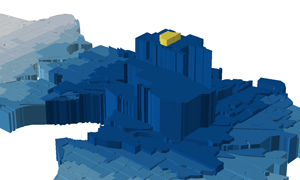
Exploratory Spatial Data Analysis
Instructor: Matt Dunbar
Exploratory Spatial Data Analysis (ESDA) encompasses a number of techniques for analyzing spatial data. We organize it here as a set of ‘best practices’ for getting to know your data in preparatio for or in concert with more complex forms of analysis. ESDA offers direct parallels to many of the aspatial descriptive statistics that are already part of most quantitative research projects: The geographic mean and spatial standard deviation, for example, tell us where the center of our study area is how compact our population is within that area. We use ESDA to generalize about our observations and to identify outliers and discontinuities that may disrupt our models or suggest hypotheses about relationships we may wish to explore further. ESDA can also be important in confirmatory statistical analysis as spatial autocorrelation can bias outcomes in many spatial and aspatial statistical models. Testing for spatial autocorrelation and locating clusters of correlated residuals will be important in the development of a wide range of models in demography and related disciplines as well as providing the motivation for many of the more sophisticated spatial statistics techniques we cover in later workshops.
Prerequisites |
Prior GIS experience, such as our Intro to GIS workshop, is highly recommended. |
Outline |
|
Materials |
|
Additional Resources |
|